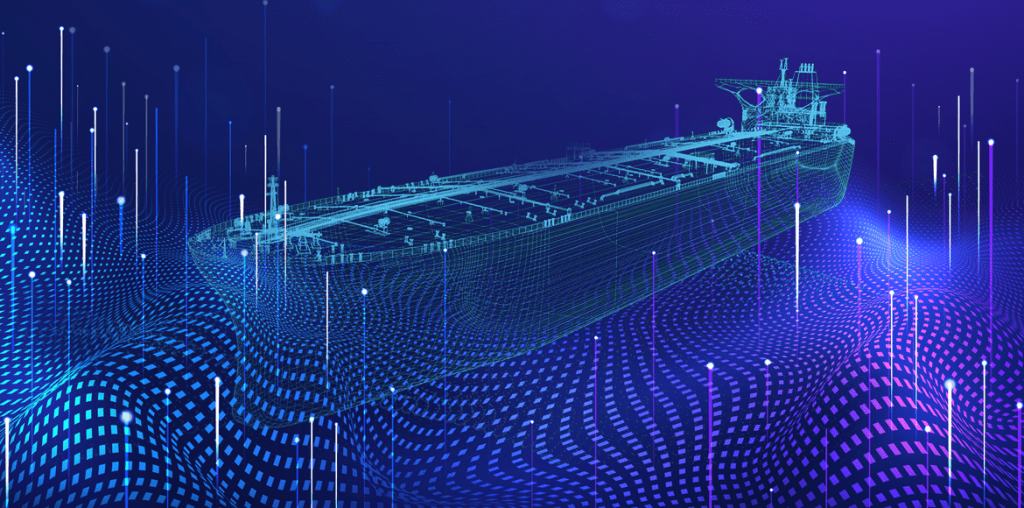Maritime Digital Transformation: The new tools for safety

Maritime Digital Transformation– For thousands of years, humans have been sailing the oceans and rivers of the world. Since over 70% of our planet is covered in water, sailing has always been a top priority for our civilisation.
Through all that time, technology hasn’t changed too much. We added sextants and compasses. We added motors and metal. But, in reality, those incremental changes simply replaced one older technology with a new, slightly improved one.
While we’ve gone a long way from burned out logs as boats, changes over the next 20 years in the maritime industry will be far more dramatic.
Digital transformation, or digitalization, of the maritime industry stands to change almost everything we do.
From automated shipboard technology to electric ships and massive data tracking, we can expect every element of the maritime industry to change and improve over the next two decades.
What is maritime digital transformation?
As technology advances, thousands of companies are working to use it to transform the shipping industry.
Something as fundamental as GPS navigation that we all take for granted didn’t become fully operational until 1993.
Using sensors, today’s shipping companies can track the position of cargo, its temperature, status, light exposure, moisture, and much more. Using other sensors, we’re able to track the precise orientation of a ship from the other side of the planet.
Increasingly navigation and steering of ships of all sizes is being handled by computer. A look back at that technology finds that it was considered highly experimental just 50 years ago. Now we’re using computers to drive our largest ships.
Data and smart analysis can make leadership jobs easier. You’re able to see more of the facts surrounding your ships. Gone are the very old days when you would simply fund an expedition and hope it got to its destination with no information but the odd letter.
Shipboard communications transformed everything in the mid-twentieth century, but today, there’s so much more data coming into offices and shipyards that sometimes the people on land know more about what’s happening on the ship than the sailors on board.
Digital Transformation and Maritime Risk Management (MRM)
Maritime risk management (MRM) is one area where we can expect to see massive change.
While we’ve made our ships safer than ever before, the ocean is still a dangerous place. Fire onboard a ship is often devastating. The ocean is merciless, destroying even the largest ships.
At HiLo Maritime Risk Management, we’re leading the way with new technology to make shipping safer.
Using the largest database in the industry and a powerful AI system, HiLo has developed a pilot of the first quantifiable analysis of human reliability. For the first time, our team has created a program that allows you to see how human factors might affect your ships and the changes you can make to prevent these issues.
The difference is the dataset that HiLo uses. Where other MRM companies use publicly available data, HiLo has access to the internal data underlying every incident. Our clients provide us with near-miss issues, minor problems, and even situations which never escalated into a full scale incident.
This larger dataset allows us to see even more clearly what the potential threats are and how we can overcome them.
Because humans are key to the success of shipping, we are also developing technology to analyse seafarer mental health. Using our data collection systems, we can spot early signs of stress that can lead to poor decision-making and incidents.
It’s about saving lives
While MRM might be about maritime assets, people at every level of the industry are committed to saving lives.
Using a larger database and more powerful AI processing power, we’re able to ensure that we save more lives at sea than ever before.
The mission for HiLo and everyone in the industry is to make it one of the safest instead of one of the deadliest industries in the world.
It’s also about assets
Everyone in the industry hates to see a ship on fire. When we find out that the sailors are safe, there’s a small bit of relief, but we all know that costs for replacing or repairing these vessels can quickly rise up into the millions.
MRM is about making sure that preventable accidents don’t happen.
At HiLo, our database is so large and we analyse so many incidents each minute that we’re able to see risks that others simply miss.
The domino effect
The cause of most accidents and major loss incidents can be traced backward in a series of choices and events that caused everything to go awry.
Like the butterfly effect, one decision or mistake can build on the next until we find ourselves with a major loss.
The goal of our high-tech AI-based analysis is to see the butterfly flap its wings and let you know it happened. If you can act on the first cause, you can stop the ultimate effect.
By monitoring ship data closely, we’re able to identify and avoid many of the incidents that plague the global fleet. At each turn, we look for new ways to make your business safer and more predictable.
The complete package
Human reliability, seafarer wellbeing, and data-driven risk analysis all work together to help your fleet stay safe and on the water.
We don’t do it alone. At HiLo, we partner with our customers and industry specialists to find more insights than anyone else in the field.
Everything we do at HiLo is designed to save lives and assets. Using the latest technology and endlessly innovating, we provide the maritime world with more information and greater safety than ever before.